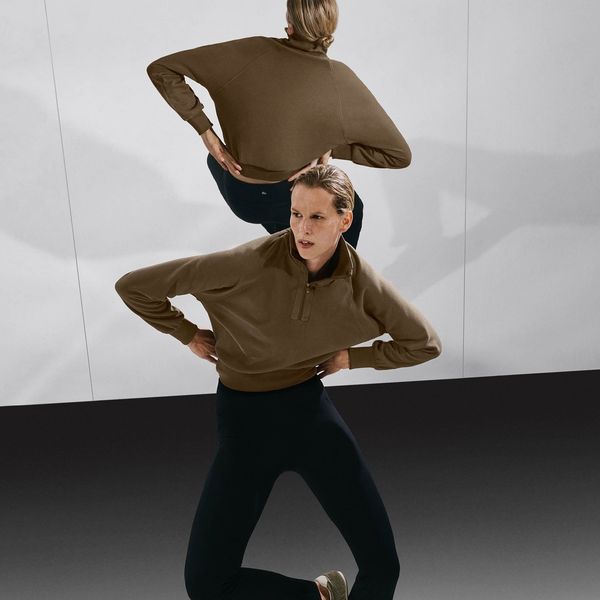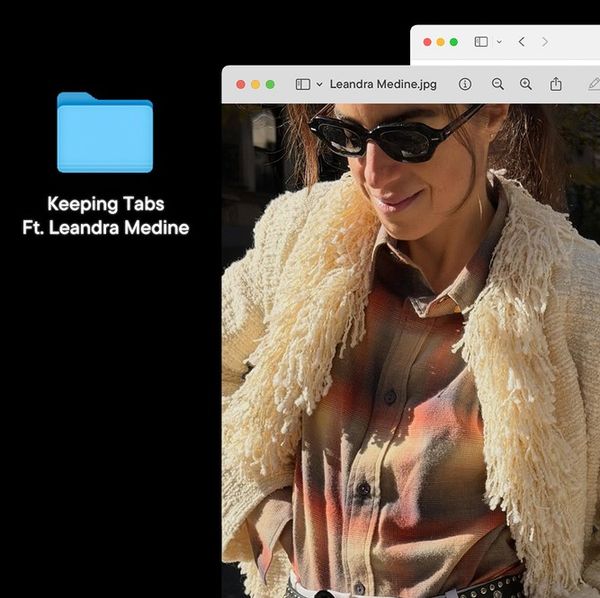"Party Girl's" Parker Posey Was The Original Downtown NYC It Girl
30 years later since the film's debut, we go deep into the show's style history with the assistant costume designer.
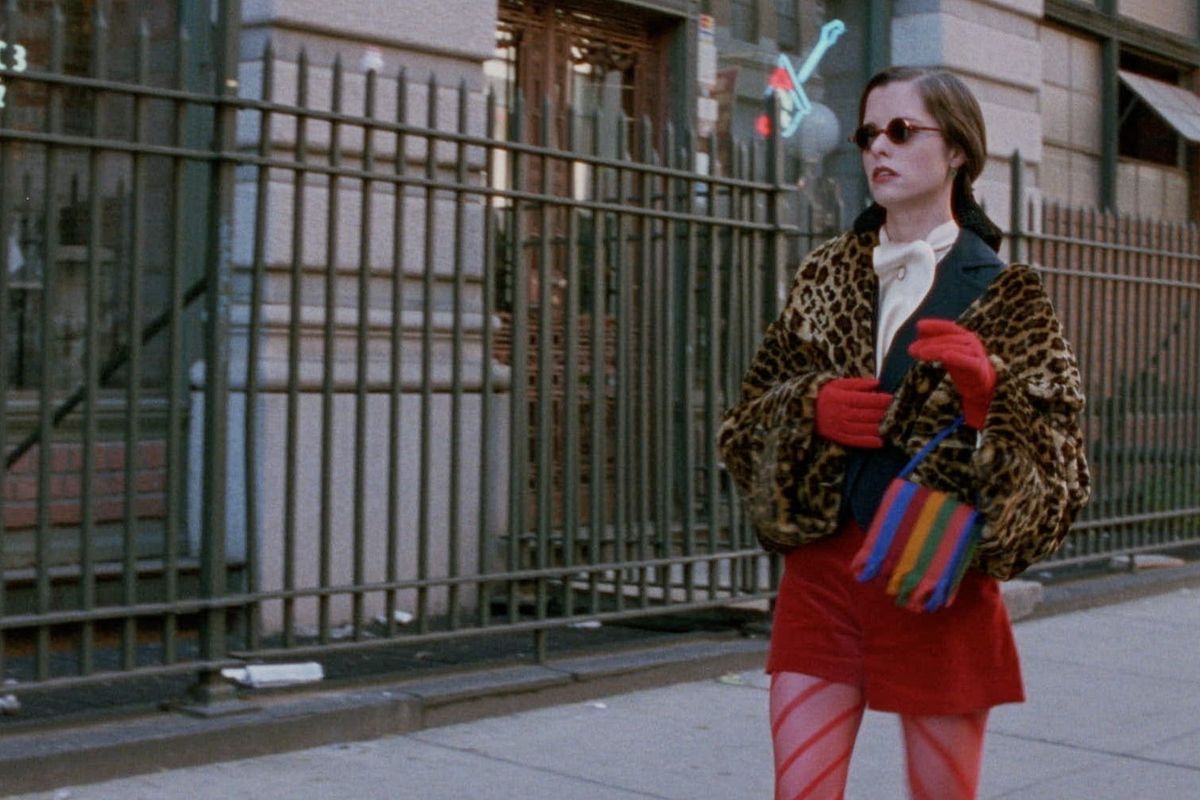
When "Party Girl" first hit screens in 1995, it didn’t just give us "Queen of the Indies" Parker Posey in her breakout role as Mary, a club queen-turned-library clerk. It gave us a type of style icon we’d never really seen before: New York It Girl who mixed vintage glamour with downtown grit, Mary’s fashion was fearless, eclectic, and totally ahead of its time. (Or better yet, of its own time.) Now, 30 years later, the film’s daring costume design continues to inspire fans new and old, popping up on Instagram fashion accounts and TikTok feeds quicker than you can say hey-hey-hello.
Much of that enduring magic is thanks to costume designer Michael Clancy, who pieced together one of indie cinema’s most iconic wardrobes on a shoestring budget (reportedly $150,000) and a whole lot of DIY spirit. Clancy, who passed away in 2022, enlisted his longtime friend, Vicki Farrell, to be his assistant on the film. “It was a pretty big deal for me to work on that movie, because it sort of jump-started my whole career as a costume designer,” Farrell tells Coveteur. She and Clancy were “fellow misfits” who grew up together in the suburbs of Toronto, going to bars and clubs downtown before they both made the move to New York.
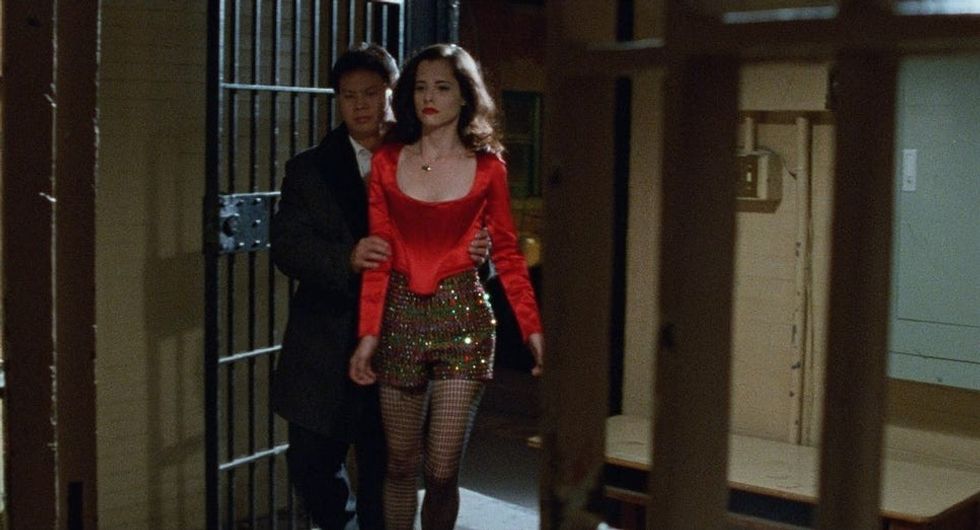
First Look Pictures
“At the time of Party Girl, my sister and he and other friends had apartments in the same building on 11th, so we were kind of running around, hanging out with each other," she says. The way Farrell describes the group is that of a creative hive, with some collaborating on projects like Party Girl or other films. “I feel really lucky that I had that time period where things were like that,” she says.
While Party Girl may look like it had the full weight of designer support behind it, the truth is far scrappier—and way cooler because it had that collaborative, DIY energy. “This was sourced in a way that Mary would have sourced things—from many different places,” says Farrell. “We didn't have money, but we put it all together.” There were no mood boards or complex costume builds or calls to design houses to request pieces straight off the runway. The aesthetic was pieced together from a constellation of sources: vintage stores, flea markets, designer loans, auction leftovers, and Brooklyn thrift treasure hunts.
Farrell is wistful when talking about old thrift destinations like Domsey’s Warehouse and Canal Jeans. “Even just the Salvation Armies were good. I used to run into Chloë Sevigny all the time at the Salvation Army,” she recalls. One legendary "Party Girl" outfit—the red Vivienne Westwood corset with rhinestone Todd Oldham shorts—is the one Mary wears to the club just before landing in jail. “We couldn’t afford it but we did splurge on buying that one piece,” she says. “I remember going up to Todd Oldham’s beautiful showroom and borrowing those rhinestone shorts. And that leopard coat she wears was a Todd Oldham, as well as that [rainbow] purse.”

First Look Pictures
Many of the costumes were fashion favors from friends. Mary’s cream Jean Paul Gaultier armor knit sweater was borrowed from Clancy’s friend David Russell (who was also a neighbor and worked with Clancy as a doorman at Area). Farrell says everyone coveted the piece so much, it was something that needed to be “under lock and key.” Then there’s the scene where Mary is “shopping” in someone’s closet at a house party and pulls out a red tweed CHANEL jacket that belonged to Vogue editor Hamish Bowles. “Hamish and Michael—but mostly Hamish—would go to these auctions and buy all the really high-end, beautiful designer pieces, and then some things would be left over,” explains Farrell. Several items in Mary’s wardrobe, like a little black jacket and pussy bow blouse, came from those auction treasure hunts.
The sheer, multicolored top that Posey wears on the official poster was from Farrell’s personal wardrobe. “It's like made out of pantyhose material, and it's all these different colors, and you peel it back," she says. “That was from a Comme des Garçons collection; I was roommates for a time with somebody that worked at Comme des Garçons and they gave me all these things at the end of the season. I still have that top.”
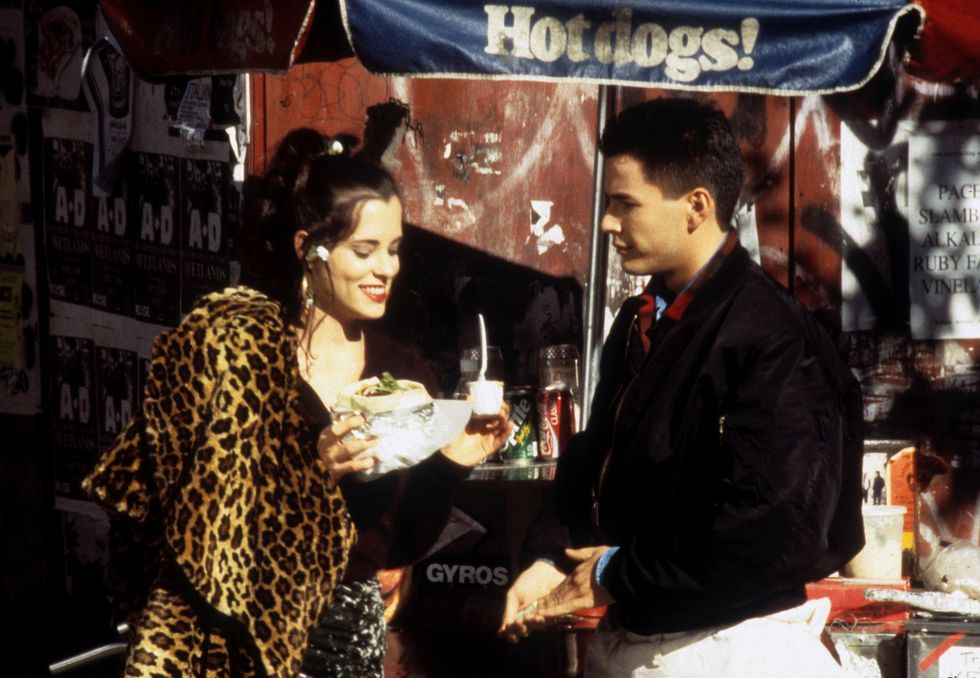
Alamy Collection
Posey’s closet was also tapped as a resource, particularly for a vintage ’70s brocade cream suit that the actor really wanted to wear. Another fan-favorite is the hoodie, tights, and shorts look from the falafel stand montage—complete with sporty high-heeled sneakers that Farrell says could have been from Vivienne Westwood. “There was definitely a time when high-heel sneakers were a thing,” Farrell muses. Another important shoe moment was the Fluevog boots Mary wears when she’s dancing in the library. In an interview with Nylon from March, Posey said that she kept the Fluevogs and had them resoled.

Alamy Collection
Farrell remembers learning how to dye garments from Michael, especially the blue opera gloves Mary wears during the club dance battle. “You could have some control over things without much money, and make them look really incredible, beautiful, and individual, with just a little box of Rit,” she says. That small dye trick became a valuable tool in her costume design kit for the rest of her career.So what makes Party Girl’s style timeless? For Farrell, it’s the mix of true collaboration and fun with friends with the stylized look patched from different eras: It’s very stylized, but it doesn’t really scream ‘90s, because distinct ‘90s designers like Oldham were used along with vintage 1940s and 1970s pieces. “I think it's a very kind of a one-of-a-kind style that Mary has, and I think everyone appreciates that,” she says. “I just wish Michael could be here to see that and enjoy that.”

